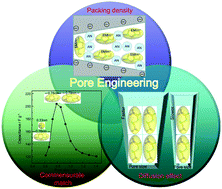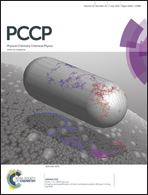Micropore engineering of carbonized porous aromatic framework (PAF-1) for supercapacitors application†
Abstract
Micropore engineering of porous carbons on the effect of capacitance was explored using a carbonized porous aromatic framework (PAF-1). The porous carbons obtained through different carbonization methods show different pore structures enabling us to do this. The capacitance was measured both in aqueous electrolyte and different organic electrolytes. The porous carbons prepared by KOH activation show both high microporous volume, which is beneficial for charge storage, and mesoporous volume, which is devoted to fast ion diffusion in the pores; properties which are highly desirable. It shows a capacitance as high as 280 F g−1 and 203 F g−1 at a current density of 1 A g−1 in 6.0 M KOH and 1-ethyl-3-methylimidazolium bis(trifluoromethylsulfonyl)imide (EMImTFSI), respectively. We also demonstrate the effect of diffusion and that of geometric packing of the electrolyte ions in the pores, where a commensurate match of the electrolyte ions with the pores of carbonized materials control and influence significantly the capacitance of these materials.


 Please wait while we load your content...
Please wait while we load your content...